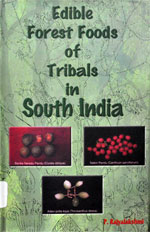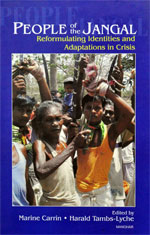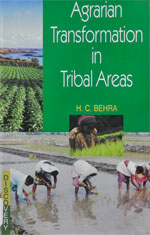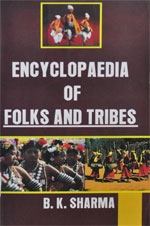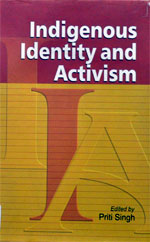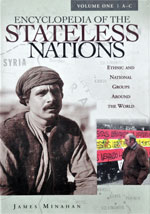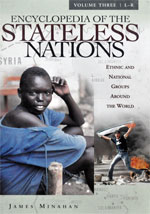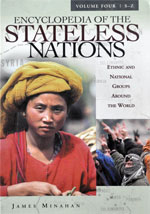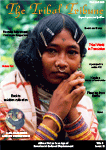Books and Blurbs
| Edible Forest Foods of Tribals in South India | ||
|
Forests are the repository of variety of foods. Tribals living as part of nature exploited nature to meet their food demands. Some of their foods are uncommon to us and nutritionally superior and can be selectively used for bringing about better varieties. It is important in this context the exploitation of edible wild stock of flora rich in carotenoids, as forests are one of the largest e3cosystems of the world. Conserving the edible wild varieties is very important as sources of genetic stock of the species. This book enlists 104 forest foods comprising of green leafy vegetables (GLVs), roots and tubers, fruits collected and consumed by the tribals and their total catotenoids (TC) and beta carotene content as analyzed using an advanced analytical technique i.e., non-aqueous reversed phase High Performance Liquid Chromatography (HPLC). This book projects the importance of recognizing and promoting wild flora rich in provitamin. A carotenoids and the possibility of producing value added products like health foods, processed food products, flavours for commercial exploitation. It serves as an important reference document for National and International Educational Institutions, Professional Nutritionists, Horticulturists, Agriculturists, Biochemists, Food Science and Technologists, Forest Departments, Tribal Research and Welfare Departments etc., and to all those concerned with applied and medicinal aspects related to plant foods. Dr. P. Rajyalakshmi is an Associate Professor in department of Foods and Nutrition, Acharya N.G. Ranga Agricultural University, Hyderabad. She has been with the University for the last 20 years in teaching, research and extension. She had published more than 30 research papers and popular articles in various national and international magazines. She was the course coordinator for a month long short course on Current concepts on Obesity and Health organized under Centre of Advanced Studies, from the Dept. of Foods and Nutrition. |
|
|
| EDIBLE FOREST FOODS OF TRIBALS IN SOUTH INDIA (Carotene Content, Medicinal and Culinary Aspects) Price: Rs. 690/- ISBN: 81-7835-028-9 Published in 2002 in India by Kalpaz Publications C-30 Satyawati Nagar New Delhi- 110052 |
||
| Tribes, Cultural-Adaptations and Belief Systems Conceptual and Methodological Perspective N.K. Das |
||
|
The themes of ‘culture’, ‘cultural-adaptation’, ‘belief-system’ and ‘tribe’/’caste’ belong to the core arena of social anthropology. Anthropologists have variously articulated the methods and theoretical orientations around them, and have established the critical relationship between the people and environment, natural resource- utilization/ management vis-à-vis varied ecological/cultural adaptations. In all such endeavours the focus is on ‘culture’. The concept of “culture”, which includes economic, social, and knowledge/belief systems, has as many meanings as does “adaptation”. Functional aspects of biological and cultural diversity relate to adaptation to different environments. People are concerned with survival in variety of ways. Adaptation implies patterns of behavior, which enable a culture to cope with its surroundings. An adjustment or modification of the structure or behavior of an organism that makes it more suited to its environment. In cultural sphere indeed the entire gamut of people’s survival and adjustment in natural environments/forests and hilly/coastal zones imply cultural adaptation. Cultural adaptation is also linked to anthropology’s comparative perspective. Human beings have the ability to adapt at numerous levels. The most basic indeed is the physical and genetic process guided by natural selection. Abilities include skill to learn and to adapt to environmental conditions. Adaptation allows imagining and responding to various situations. The mode of adaptation stands between physical adaptation and learned behaviour. This is cultural adaptation, representing a shared body of beliefs, which define human nature. Here comes the reliance on traditional wisdom, worldview, indigenous knowledge which are tied with the belief systems, customary laws, myths, and oral traditions, depicting narrative form of the ideals of the tribe the ethical positions- good and bad. This compilation principally deals with the topics ‘Tribes’, ‘Cultural-Adaptations’ and ‘Belief Systems’. In this compilation the authors have dealt with these themes either in a specific and focused manner or treated the same in a broad manner. The book will be of immense help to the anthropologists, sociologists, folklorists and economists. Dr. N. K. Das is a senior social anthropologist, Anthropological survey of India. He holds post-graduate degree and Ph.D. in Social Anthropology. Besides more than one hundred research papers in reputed national and international journals he has authored/ edited several books: Ethnic-Identity, Ethnicity, and Social Stratification (1989); Kinship Politics and Law in Naga Society (1993); The Anthropology of Weaker Sections (1993), Pre-Agricultural Communities of India, (1993), Nagaland, People of India. (1994); Culture, Religion and Critical Studies in Syncretism (2003); and Stratification among tribes of India (In Press). At Present he is Chief Editor, Journal of Social Anthropology, New Delhi; Managing Editor, Human Science: The Journal of the Anthropological Survey of India. Dr. Das worked as National Coordinator in projects on Stratification in tribal India, people of India: Cultural Diversity: Study of Indigenous Knowledge System. He has coordinated several International Seminars. |
|
|
| Edition: 2009 ISBN: 978-81-8387-239-3 Published by SERIALS PUBLICATIONS 4830/24, Prahlad Street, Ansari Road Darya Ganj, New Delhi- 110002 (India) Phone: 23245225. Fax: 91-11-23272135 E-mail: This email address is being protected from spambots. You need JavaScript enabled to view it. |
||
| People Of The Jangal Reformulating Identities and Adaptations in Crisis Edited by: Marine Carrin. Harald Tambs-Lyche Manohar |
||
|
Globalization processes link centers of power and culture all over the world. But these are surrounded by peripheries, whose integration in the global paradigm is neither an inevitable nor an automatic process, as a native perception might lead us to believe. In South Asia, such peripheries seem a long way form the cosmopolitanism of Bombay or Bangalore, and the crisis is hardly the same to the ecologist statesman and the herdsman looking for pasture. Societies in the South Asian wilderness-jangal-are closely tied to the environment but peripheral to systems of power. For them, the landscape is symbolically charged, and the meaning with which natural and social surroundings are invested tends to produce an identification as against other, expressed in terms of ethnicity. Changes at the symbolic level imply a danger of losing identity. The peripheral groups studies in this volume are the Santals, the Rona, the Bondo, the Pengs of Orissa, the Jadopatias of Bengal, the Kulava of Kerala and the Todas of Nilgiri among others. It is in the periphery that confrontations between development projects, conservation efforts, and local populations are most marked. The contributors deal with various peripheries, faced with intrusion by more powerful groups, as well as by environmental crisis. But the responses are various, as the authors of this volume show. Contributors to this landmark volume include Georg Pfeffer, Peter B. Andersen, Gunnel Cedderloff, Deepak Kumar Behera and Srikant Patel among many others. Marine Carrin is Director of Research, |
|
|
| Jacket illustration: A Gond demonstration in Bonai, Orissa, 2004, Photo: Uwe Skoda. Jacket design: Kamal Purna Jammual ISBN: 81-7304-582-8 307.772 CAR First published 2008 @ Marine Carrin and Harald Tambs-Lyche, 2008 @ This collection, Manohar Publishers and Distributors Published by Ajay Kumar Jain for Manohar Publishers & Distributors 4753/23, Ansari Road, Daryaganj, Delhi 110002 Typeset by: Fine Curve Computers, Meerut City 250002 Printed at :Lordson Publishers Pvt. Ltd., Delhi 110007 |
||
| Agrarian Transformation in Tribal Areas H. C. Behera |
||
|
The book “Agrarian Transformation in Tribal Areas: Emerging Trends and Issues” is of multidisciplinary in nature. The book is a composition of ideas from the disciplines like anthropology, sociology, economics, agricultural science, etc. Considering the importance of both tribal studies and agrarian studies, the book will be useful to cater the needs of students of postgraduate studies, researchers, academics, administrators and voluntary workers involved in the similar field. |
|
|
| First Published-2010 ISBN: 978-81-8356-636-0 Published by: DSCOVERY PUBLISHING HOUSE PVT. LTD. 4831/24, Ansari Road, Prahlad Street Darya Ganj, New Delhi-110002 (India) Phone: +91-11-232799245, 43764432. Fax:+91-11-23253475 E-mail: This email address is being protected from spambots. You need JavaScript enabled to view it. This email address is being protected from spambots. You need JavaScript enabled to view it. web: www.discoverypublishinggroup.com |
||
| Encyclopaedia Of Folks And Tribes B.K. Sharma |
||
|
India is the country having the variety in every way, as the country is having the largest concentration of tribal people from all over the world except Africa. India has the wide and rich Echo-system which gives the variety of tribes to grow and survive in the country. The north eastern part of the country is completely unexplored. The valley of north east India is having the green vegetation, majestic beauty of mountains, rich variety of flora and fauna. There are many such states in North East India which showcases the beauty of north east India. The major part of tribes resides in the hilly and forested areas of the state. Tribes are generally found in the areas which are away from the alluvial plains and the area which is near to the rivers. Each tribe has its own folk songs and kaleidoscopic traditional dance and dressing style. Each is having its own customs, language, dress, attires, jewelery, and head strings that are worn by them. B.K. Sharma took his M.A. and Ph.D. degree and served as teacher in Government College is a scholar and interpreter of Indian History and Culture. He had a classical training in humanistic secular literature, religion and culture and had combined insight and perception with his literary abilities. He is a retired teacher and at heart a philosopher writes on literature and culture and does not hesitate to accpt the best in the religious and cultural traditions of Indian history and Philosophy. |
|
|
| ENCYCLOPAEDIA OF FOLKS AND TRIBES First Published 2010 ISBN: 978-93-80388-99-1 Price: Rs. 995 Published by D.P.S. PUBLISHING HOUSE Room No. 213, 7/28, Mahavir Street, Ansari Road, Darya Ganj, Email: This email address is being protected from spambots. You need JavaScript enabled to view it. Mobile: 011-30120119, 91-9811734184 |
||
| Indigenous Identity and Activism Edited by Priti Singh |
||
|
Recent decades have witnessed an efflorescence of identity construction and activism of indigenous peoples throughout the world. In the process, a multiplicity of indigenous actors has emerged with new discourses and strategies seeking transformative changes to their inherent rights and representation. In their complex projects of self-affirmation to overcome political and economic marginalisation, the indigenous peoples are deploying culture as an important resource. No doubt, the resultant indigenous activism and the manner in which it is played out vary from country to country. Indigenous Identity and Activism captures the broad contours of the resurgent indigenous movements in select countries- Australia, Brazil, Canada and Mexico. Renowned scholars on the subject offer their insightful reflections on the ways in which the activists and the movements have created a space for promoting indigenous cultural reproduction and identity reconstruction. Dr. Priti Singh is Assistant Professor in the Centre for Canadian, US and Latin American Studies, School of International Studies, Jawaharlal Nehru University, New Delhi. Besides a book titled Governance of Indigenous Peoples in Latin America (2002), she has published a number of short monographs. Recipient of Australia India Council’s Senior Fellowship (2003) and Shastri Indo- Canadian Institute’s Canadian Studies Faculty Research Fellowship (2008) she had been engaged in research on indigenous communities. Dr. Singh is Member, Editorial Advisory Board for Thesis Eleven: Critical Theory and Historical Sociology (Sage: London, Delhi, Thousand Oaks, Ca.) and Member, Editorial Board, Australian Perspectives, La Trobe University, Melbourne, Australia. |
|
|
| ISBN: 978-81-7541-488-4 First Published in India in 2009 Price: Rs. 550, US$ 27.50 Published by: SHIPRA PUBLICATIONS 115-A, Vikas Marg, Shakarpur, Delhi- 110092 (India) Tel.: 91-11-65277210, 22500954, Fax: 91-11-22458662 Email: This email address is being protected from spambots. You need JavaScript enabled to view it. www.shiprapublications.com
|
||
| Encyclopaedia of the Stateless Nations Ethnic and National Groups Around the World James Minahan |
|
|
|
Nationalism is a mighty force in the 21st Century. Its many limbs have not been so politically significant since prior to World War 1. While current trends tilt toward regional economic groupings, national identity- and demands for greater political and economic autonomy- has created a national, regional, and international groundswell since the end of the Cold War. An expanded sequel to Minahan’s award-winning guide to some 200 groups, Nations Without States: A Historical Dictionary of Contemporary National Movements (1996), this book provides an easy-to –use, accurate, and up-to-date guide to over 300 developed or emerging national groups worldwide. Providing fuller historical profiles of each group, this is the definitive reference on the nationalism and national groups that helped shape 20th century politics-and will likely shape the politics of tomorrow. Included are numerous new national groups that have emerged since the publication of Minahan’s 1996 book. Many of these remain unknown outside of their own regions. Others make headlines. The evolution of each group is traced from its earliest history to the present day, making the book an indispensable reference for those wishing to understand the world’s growing multitude of national groups. |
|
|
| ISBN: 0-313-32384-4 Greenwood Press 88 Post Road West Westport, CT 06881 www.greenwood.com |
||

